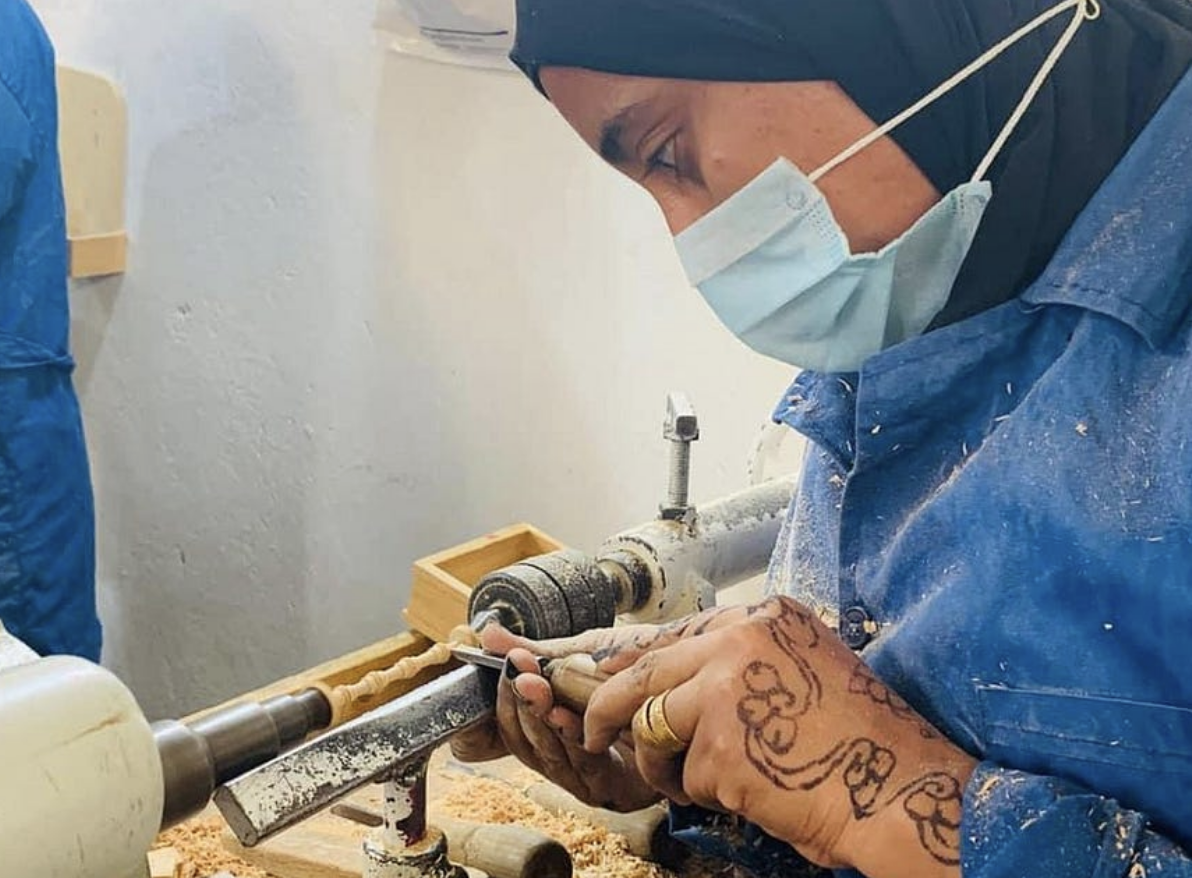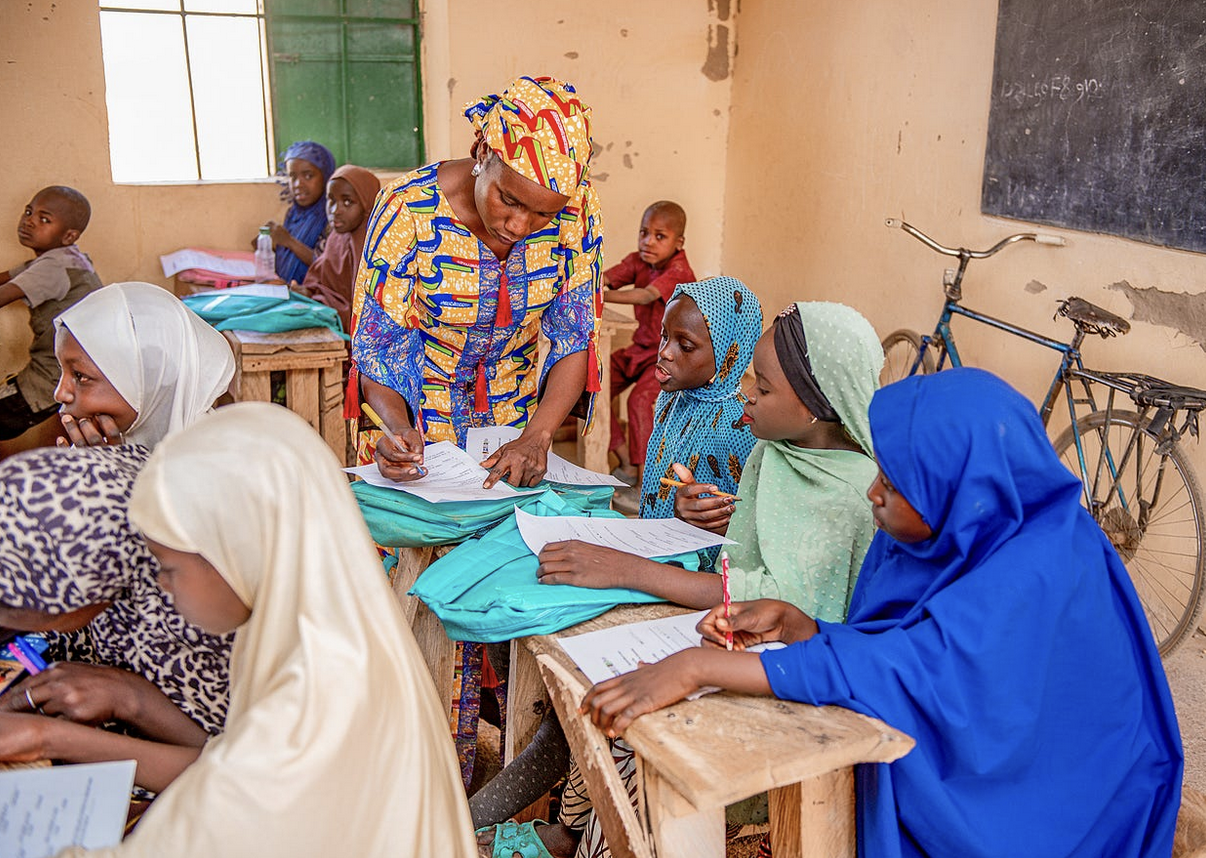5 Actions for Supporting Adolescent Girls

The International Day of the Girl — Oct. 11 — reminds us all that the voices and aspirations of the world’s adolescent girls deserve to be heard and amplified.
Yet around the world, the dreams of too many adolescent girls are deferred: every three seconds, a girl is married before the age of 18. Complications from pregnancy and childbirth are the leading cause of death among adolescent girls. Globally, 119 million girls are out of school and, in countries affected by conflict, girls are more than twice as likely to be out of school than girls living in non-affected countries.
"With the right opportunities and resources, the potential of the world’s more than 1.1 billion girls is limitless."
USAID invests in initiatives that help adolescent girls fully and meaningfully participate in their societies, claim their rights, and make informed decisions about their lives, as outlined in the U.S. Global Strategy to Empower Adolescent Girls.
Take Kanykei — growing up in the Kyrgyz Republic, her parents discouraged her from studying and eventually forced her to drop out of school. She got a job to support her future education, but her father spent her earnings and arranged for her to marry an older man. Kanykei fled and was referred to the Oasis Foundation, where, with USAID’s support, she was able to return to school.
“Since childhood, I have dreamt of becoming a neurosurgeon — and I haven’t given up on that dream,” she explains. “My plans are to successfully finish school and enter a medical school, to become a doctor.”
USAID shares five key actions to support adolescent girls globally to reach their potential.
1. Enhance girls’ access to quality education in safe environments.
In many countries around the world, adolescent girls are forced by their families to leave school to earn an income; perform unpaid caregiving and domestic work; or marry early. Others may face physical or sexual violence and harassment at or on the way to school. USAID supports initiatives that enhance girls’ access to quality education in safe environments. In Nigeria, for example, where 60% of out-of-school children are girls, USAID supported the country’s Ministry of Education to provide over 21,000 out-of-school adolescent girls with foundational non-formal learning opportunities that helped them return to formal education.

A participant in the USAID-supported initiative in Egypt, which delivered vocational training and created income-generation opportunities for adolescent girls and young women (ages 10–29) across 10 economic sectors. Through vocational training and empowering champions to advocate for change, the initiative raised awareness and advocated against GBV, including female genital mutilation and cutting, sexual harassment, and child, early and forced marriage and unions. / USAID
2. Provide economic opportunities and incentives for girls and their families.
To help families keep their daughters in school and delay marriage to adulthood, USAID provides families with scholarships, stipends, or conditional cash transfers to help mitigate economic pressures within poorer households. USAID also works to increase families’ financial security by providing adolescent girls with financial literacy, income generating opportunities, vocational training, and access to capital and to technology. For example, in Egypt in 2023, USAID supported a new business development center, which provides adolescent girls and young women with training on entrepreneurship, English, and information technology to enhance their career pathways.

U.S. Ambassador to Ghana Virginia Palmer (front row, third from right) and some current and previous YOLO cast members at the premiere of YOLO Season 6 on Jan. 20, 2023. The series reached adolescent girls in Ghana with information about menstrual health and hygiene, peer pressure, navigating parent-teen relationships, bullying, teacher-student relationships, alcohol and drugs, and the importance of respectful, safe, and healthy romantic relationships.
3. Foster adolescent girls’ empowerment by providing information, skills, services, and supports that improve their wellbeing.
Increasing girls’ awareness of and access to skills, services, information, and support networks beyond formal education is critical. This is why USAID supports efforts to increase girls’ awareness of their rights and ability to advocate for themselves around the world. In Ghana, for example, USAID supports a youth television series, YOLO, or “You Only Live Once,” which exposed an estimated 200,000 adolescent girls to accurate health information, and highlighted positive social and cultural norms to advance gender equality.

Treaser Nyirenda works with a USAID-supported project in Malawi to train youth champions to engage with traditional and faith leaders to eliminate harmful cultural norms and practices that propagate child, early and forced marriage and unions. / Haneeph Maulana
4. Work with communities to shift harmful norms and prevent and respond to gender-based violence.
Adolescent girls and boys face discriminatory gender norms — or social rules — that restrict the attributes, roles, and behaviors that are valued and considered acceptable within a given culture or social group. These harmful norms contribute to inequalities; perpetuate gender-based violence; prevent girls from completing their education; and impede girls from reaching their life goals. USAID partners with local organizations and leaders around the world to address these harmful gender norms and practices. In Malawi, for example, USAID supported youth to form a social movement to respond to child, early and forced marriage and unions. In 2023, the initiative prevented over 200 cases of child, early and forced marriage and unions and reached over 2,000 youth with behavioral change messages.
In a school classroom of mostly girls dressed in abayas, a teacher stands over a young female student holding a pencil and pointing out information on the worksheet in front of the student. A bicycle is parked in the back of the room under a chalkboard.

Out-of-school adolescent girls attend a non-formal learning center in Borno, Nigeria, as part of USAID’s Opportunities to Learn Activity. / USAID
5. Strengthen policy and legal frameworks and accountability.
Globally, many legal frameworks and country policies do not protect girls from violence and discrimination — whether from failing to consider girls’ needs, actively discriminating against girls, or not enforcing anti-discrimination provisions. USAID works to strengthen laws and policies that support adolescent girls — such as in Indonesia, where USAID partnered with provincial and local governments to establish regulations and procedures to address child, early and forced marriage and unions and to improve government planning and budgeting, as well as monitoring and evaluation, thereby strengthening the government’s response to this critical issue.
Read more about what the U.S. government is doing to support adolescent girls’ leadership and full participation around the world.
About The Author(s)
Jamille Bigio
Senior Coordinator for Gender Equality and Women’s Empowerment
USAID